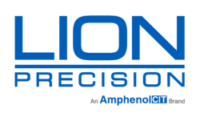There are many parts, electronic and mechanical, that must work together to properly place a label on a package. When there is a labeling problem the label sensor is an easy target for blame; be sure to consider the machine as a whole.
Problems:
- Occasional double feed of label
- Capacitive, Ultrasonic: Be sure web is tight and riding on the sensor baseplate
- All: Use a shielded cable and ground the shield to limit electrical noise interference
- No output
- LRD6300, LRD2100, LRD8200, LionEye2: If the output indicator flashes, the sensor is sensing labels and thinks it is triggering the output – it is not an adjustment issue. See “All” below.
- LRD6110: If the light-bar indicator is going from “label” end to the “web” end, the sensor is sensing labels and thinks it is triggering the output – it is not an adjustment issue.See “All” below.
- All: If indicators show the sensor is working correctly, connect a voltmeter to the output connection while it is connected to the machine. The output should change between about 0 VDC and a positive voltage (+5, +12, +24 depending on the power to the sensor and the internal power of the control circuit). If no voltage change is seen, it could be that the input is not design for open-collector outputs (NPN or PNP). In that case, add a pull-up or pull-down resistor. See the NPN & PNP Outputs section of Installation page for details.
- Won’t work on a new label
- LRD2100: Adjust according to adjustment instructions. If the labels will not be sensed reliably, there may be some metallic or high-carbon content in the artwork or label material and the LRD2100 will not work reliably. Use an LRD6110 or LRD8200.
- LRD6110: Adjust according to adjustment instructions. If the problem persists, slowly draw a label through the sensor and watch the light bar. Watch for any areas in the label where the indicator moves down toward the center “X” area. Any movement the lightbar through center will cause an output trigger. Adjust the sensor for proper difference between the gap and the lowest reading point of the label.
- LRD6300: Adjust according to adjustment instructions. If the problem persists, slowly draw a label through the sensor and watch the light bar. The LABEL area should light when a label is in the sensor, and the GAP area should light only when a gap is in the sensor. Watch for any areas in the label where the light between the LABEL and GAP areas is on. That light should only be on during transition between labels and gaps.
- LRD8200: Adjust according to adjustment instructions. If the problem persists, slowly draw a label through the sensor and watch the light bar. Watch for any areas in the label where the indicator lights the center light in the gray “Running” area of the indicator. When the center light is on, the sensor is very close to being triggered. Adjust the sensor for proper difference between the gap and the lowest reading point of the label. Ultrasonic technology can be finicky. Some label materials and construction will naturally vibrate at the ultrasonic frequency making them invisible to ultrasonic sensors. Use an LRD2100 or LRD6110 instead.
- LionEye2: Adjust according to adjustment instructions. If the problem persists, changes in transparency accross the label may make it difficult to sense reliably. Use and LRD2100, LRD6110, or LRD8200 instead.
- All: Send sample labels to Lion Precision for analysis and setup suggestions. Just contact us and let us know they’re coming.
- Using a label sensor with a booklet or extra-thick label
- LRD8200, LionEye2: Booklets should work well with these sensors as they have larger sensor slots. Depending on the booklet construction and sensor adjustment, theLRD8200 Ultrasonic Label sensor may trigger at the leading edge where the adhesive backing starts (before the booklet pages start). The LionEye2 Optical Label Sensor will not trigger until the booklet if the backing is clear.
- LRD2100, LRD6110, LRD6300: If the booklet will not fit in the sensor slot, the 0.03″ spacer between the sensor top and the baseplate can be replaced with a thicker spacer. It is important that any material used as a spacer be conductive metallic. Extra spacers are available from Lion Precision. Usually, doubling the slot to 0.06″ is sufficient, but sometimes a triple width is necessary. Some booklets are designed for a curved surface resulting in a booklet that bows upward when the web is straight and flat. This often causes the top of the booklet to contact the sensing surface when passing through the sensor. This may work, but it could be unreliable and should be tested.
- Sensor won’t adjust according to instructions
- All: If following the setup instructions doesn’t produce the results described in the setup instructions, the label materials may not be compatible with that particular sensor technology. Try another sensor technology and/or send label samples to Lion Precision for analysis.
- Sensor must be readjusted later in the day with the same labels
- LRD6110, LRD8200: Sensor electronics are often affected by significant changes in temperature. The behavior of sound waves in air is also affected by temperature (LRD8200). If there is a significant change in temperature during the course of the day the sensor could need readjustment. Try to minimize the temperature change around the sensor by avoiding sunlight or other heat sources near the sensor.
